
The Pearl River (Zhujiang) Delta has developed into the world’s ultimate city (Figure 1). More people live in the urbanization there than in any space of similar size in the world (Figure 2). Once home to separate urban enclaves comprising 9 million residents in 1980, the now adjacent urban areas of the Pearl River Delta are home to 55 million residents, nearly one-half more in either the Yangtze Delta adjacent urban areas (which have undergone a similar development process) or the Tokyo-Yokohama urban area with 38 million residents (Note 1). The population density is slightly above that of the Yangtze Delta urbanization and Tokyo-Yokohama (Figure 3), well below others, such as Jakarta, Seoul and Mumbai, and far above that of New York (which covers nearly a third more land area).
This article provides summary information on the adjacent urban areas of the Pearl River Delta. There is also a photographic tour, following the text comprised of Figures 10-56.
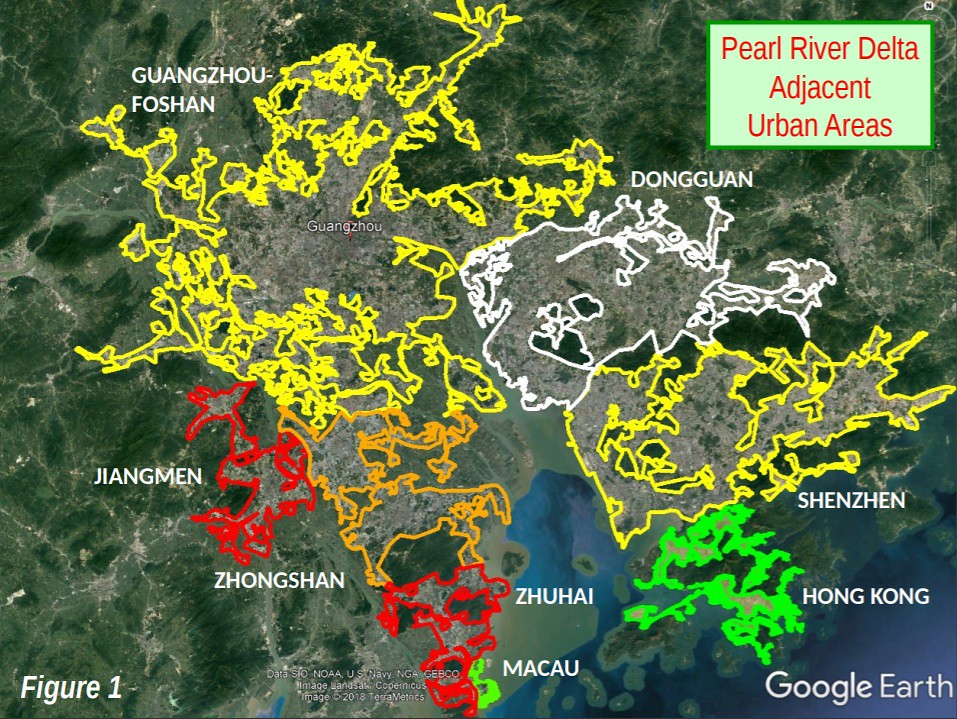
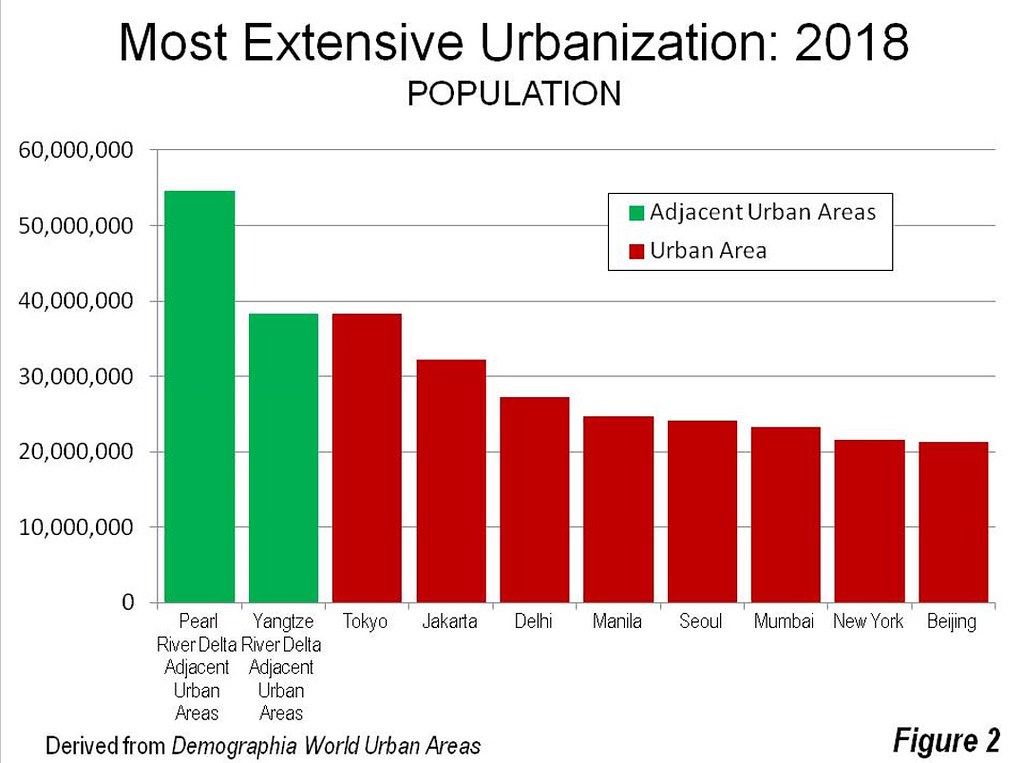

Geography of the Pearl River Delta Adjacent Urban Areas
The Pearl River Delta urbanization extends, about 130 kilometers (75 miles) south along the west bank of the Pearl River from Guangzhou, through Foshan, Jiangmen, and Zhonghsan, Zhuhai to Macau, and about 160 kilometers (100 miles) south along the East Bank through Dongguan and Shenzhen to Hong Kong.
The Guangdong-Hong Kong-Macau Greater Bay Area
This urbanization is at the core of a cooperative effort to integrate these adjacent urban areas (the Guangdong-Hong Kong-Macau Greater Bay Area) into an integrated economic region. The Greater Bay Area Plan combines planning for China’s Hong Kong and Macau Special Economic Regions including the Guangdong province municipalities of Guangzhou, Shenzhen, Dongguan, Foshan, Zhongshan, Zhuhai Jiangmen, Huizhou and Zhaoqing. Overall, including the areas beyond the adjacent urban areas has a population approaching 70 million.
The opening last month (October 2018) of the Hong Kong-Zhuhai-Macau Bridge (Top photograph and Figure 4) was both a important and symbolic step toward economic and cultural integration. The South China Morning Post (Hong Kong), posted a video of a trip across the bridge just before it opened. Road travel between Hong Kong International Airport and Zhuhai has been reduced from more than four hours to under an hour. Before the new bridge opened, the southernmost crossing (Humen Bridge) was more than 70 kilometers (45 miles) farther north.

Strong Growth in All of the Adjacent Urban Areas
The growth of the Pearl River Delta has been overshadowed in attention Shenzhen’s, legendary for growing rapidly to a megacity since its designation as a special economic zone in 1979 (under the leadership of Deng Xiao Peng).
In 1980, Shenzhen had the smallest population of the now adjacent urban areas (60,000, according to the United Nations estimate). In 1979, Shenzhen was designated as a special economic zone under the leadership of Deng Xiao Peng. Since that time Shenzhen has grown to 13.5 million residents, an increase of more than 13.4 million.
In 1980, more than half all of the nine million population in the urban enclaves was in Hong Kong, which had about five million residents, while Guangzhou had approximately two million (Figure 5). Guangzhou-Foshan, not Shenzhen has grown the most, adding 16.3 million since 1980 (Figures 6 and 7). Percentage growth ranged from over 200 percent in Macau, to 600 percent in Guangzhou-Foshan and 22,000 percent in Shenzhen. The slowest growth was nearly a respectable 50 percent in Hong Kong, which accounted for only 5 percent of the growth since 1980.


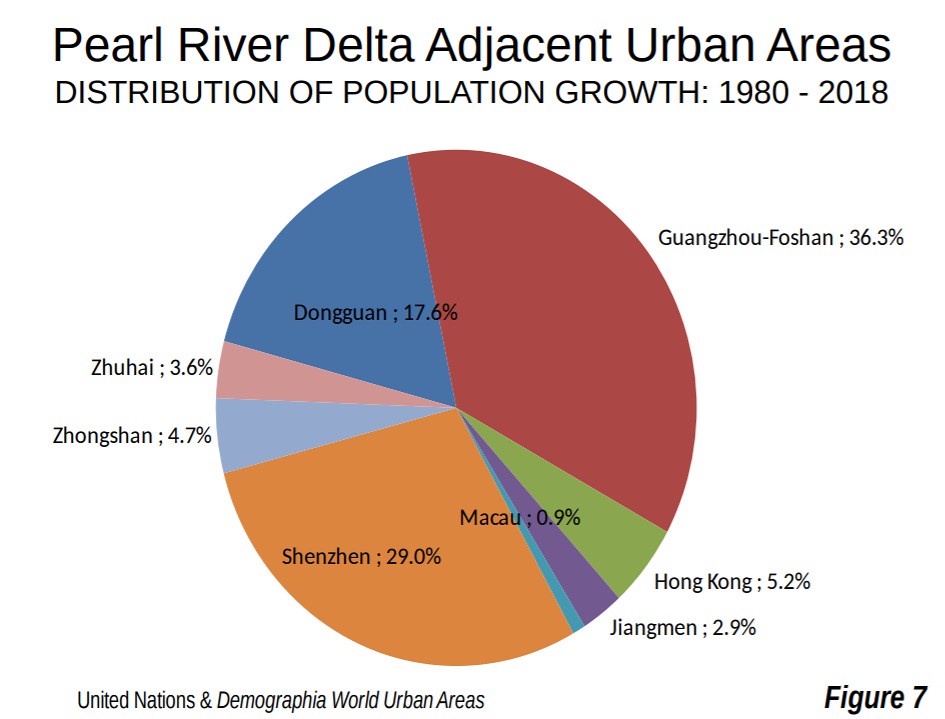
Wide Range of Population Densities
While the Pearl River Delta adjacent urban areas are well below the highest urban densities in the world (Dhaka, Bangladesh is at least 7 times denser), they include the two densest urban areas in the high-income world. Hong Kong and Macau. Their above 25,000 per square kilometer density (65,000 per square mile) is far greater than the overall 5,000 (13,000 per square mile) in the other urban areas.
Commercial Centers
The Pearl River Delta has some of the strongest commercial centers in the world. Astoundingly, more than one quarter (13) of the 50 tallest buildings in the world are located in the Pearl River Delta (excluding telecom towers). The Pearl River Delta has more “supertall” buildings (300 meters or approximately 1,000 feet) than any single urban area, and more than three times as many as New York. This is an incredible turnaround, since in 1970, 9 of the 10 tallest buildings in the world were in New York (Figure 8). The Pearl River Delta also has a commanding lead among buildings of 150 meters (approximately 500 feet) nearly as many as the next three areas, New York, the Yangtze River Delta adjacent urban areas and Dubai (Figure 9). The Canton Tower (Figure 13), across the Pearl River from Guangzhou’s Zhujiang New Town is the second tallest free-standing tower in the world (not classified as a building) and the tallest structure in the Pearl River Delta.
These dense centers belie a significant dispersion of employment and commercial activity. In addition to the large historic commercial districts, there is a plethora of edge cities (see: see “Edge Cities in China: Suzhou,” note 1), such as in Figures 20, 26, 28, 29, 30, 40 and 41. This dispersion shows no signs of slowing down. For example, ground was recently broken on the Shimao Shenzhen-Hong Kong International Centre in Shenzhen, which will be located appositely 15 kilometers (10 miles) away from the largest commercial areas, and will be the tallest building in the Pearl River Delta and would rank second in the world by today’s rankings, after the Burj Khalifa in Dubai

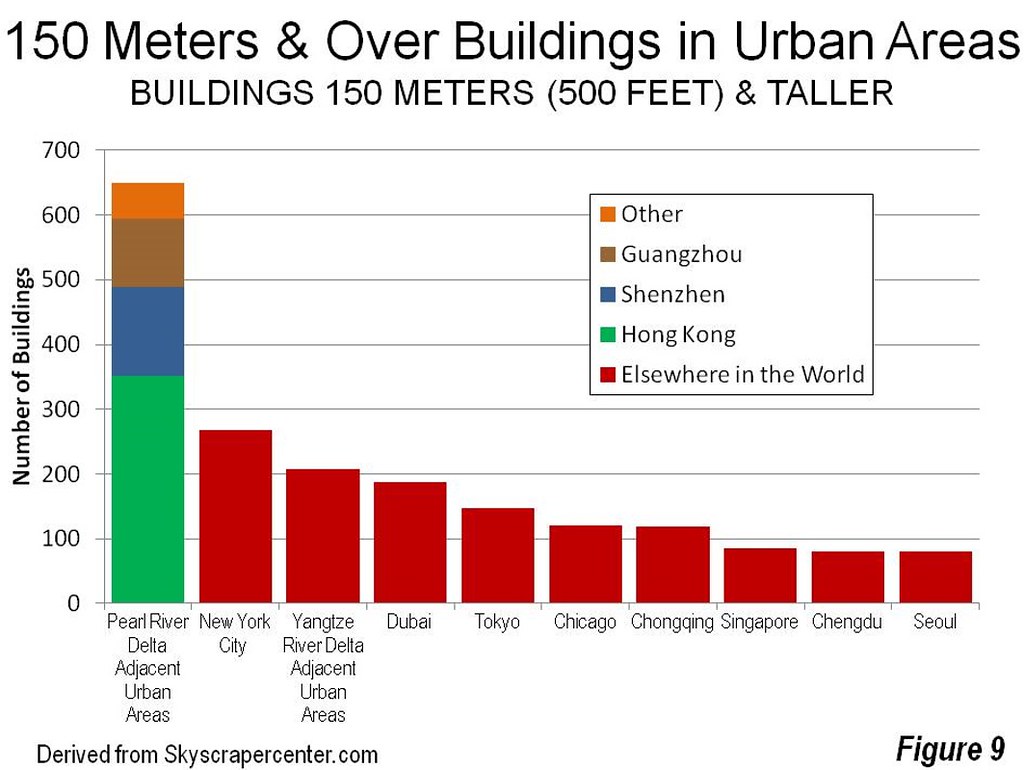
Integrating the Adjacent Urban Areas
Transportation is a critical element of integrating the urban areas of the Pearl River. The area has long had a comprehensive toll motorway (freeway) system, though automobile ownership rates are not yet high (Note 2). Additional bridges are being planned. The eight-lane Second Humen Bridge will link Dongguan and Nansha District in Guangzhou. The planned Shenzhen-Zhongshan bridge will reduce travel between these municipalities to 20 minutes, from the present two hours. Also eight lanes, the bridge will be the critical link in a cross-town motorway from Huizhou through Shenzhen and Zhongshan to Jiangmen.
Rapid commuter rail connections are being established between the municipalities in the Greater Bay Area and Guangzhou South (Guangzhounan) Station. The intention is to reduce travel times between the cities to one-hour or less. Such travel times are now achieved between Guangzhounan and all of the Greater Bay Area municipalities, including Huizhou and Zhaoqing.
Three of the world’s 10 most patronized Metro (urban rail or subway) systems are in the Pearl River Delta. The Guangzhou Metro is reported to rank fourth and is connected to the Foshan Metro, helping to advance the economic integration of those two municipalities. There are also plans to connect to the Dongguan Metro, which has begun construction. Hong Kong’s MTR ranks 9th among the world’s most patronized Metros. The Shenzhen Metro, already carrying nearly as many riders as Hong Kong, plans to extend its system to be the longest in the world by 2030, and will link up with the Dongguan Metro. These three largest Metros would overwhelm the ridership figures for any other urban area in the world, as well as the Yangtze River Delta adjacent urban areas.
Connecting to the World
The Pearl River Delta has three of the top ten seaports in the world, including Guangzhou, Shenzhen and Hong Kong. Two of the area’s international airports rank in the top 20 in passenger usage, including Hong Kong International (8th) and Guangzhou Baiyun International (13th).
The Future
The various initiatives outlined above, and others promise to improve the economic performance of the Greater Bay Area. There are, however challenges, not the least of which is a potentially transient population. Much of the growth of the east coast urban areas, and especially those in the Pearl River Delta derived from temporary migration to staff the manufacturing and construction that fueled China’s rapid economic advance and poverty reduction. The South China Morning Post report that more than 60 percent of the residents of Guangzhou, Shenzhen, Dongguan and Foshan are temporary residents, without permanent residency permits (hukou).
Sustaining the present population levels, especially with China’s low fertility rate, will require turning temporary residents into permanent ones. It seems likely that the Pearl River Delta will continue to be the world’s ultimate city in the years to come.
PHOTOGRAPHIC TOUR OF THE PEARL RIVER DELTA URBANIZATION
Figure 1: Pearl River Delta Adjacent Urban Areas superimposed on Google Earth
Figure 4: Hong Kong-Zhuhai-Macau Bridge western approach (aerial photograph)
The bridge from Hong Kong enters from the middle-right of the picture and enters the customs facility on the island. Access to Macau is to the bottom of the picture. Access to Zhuhai is along the lower portion of the picture (just to the north of Macau towers at the bottom) reaching Zhuhai just to the east of Zhuhai Railway Station, a white rectangular structure partially shown near the bottom left corner of the picture.
The Apex: Guangzhou-Foshan (Figures 10-28)
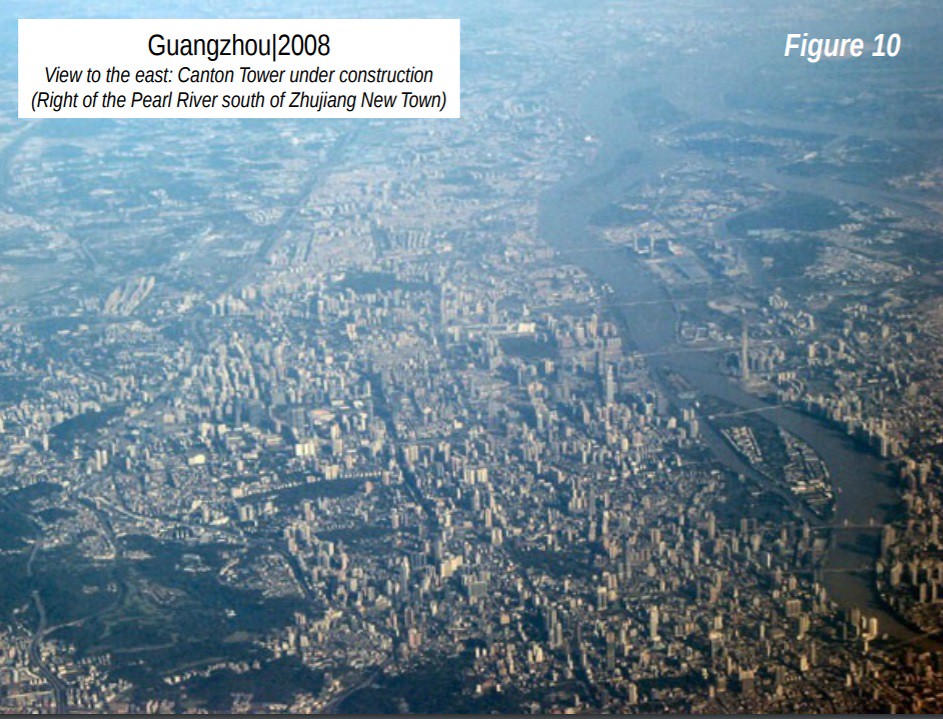
Figures 11-17: Zhujiang New Town: One of the world’s largest “edge cities” (substantial new tside the central business district) Like Atlanta’s centrally located Mid-Town edge city, Zhujiang New Town is located near Beijing’s historic central business district. For a more detailed description of edge cities, see “Edge Cities in China: Suzhou,” note 1.
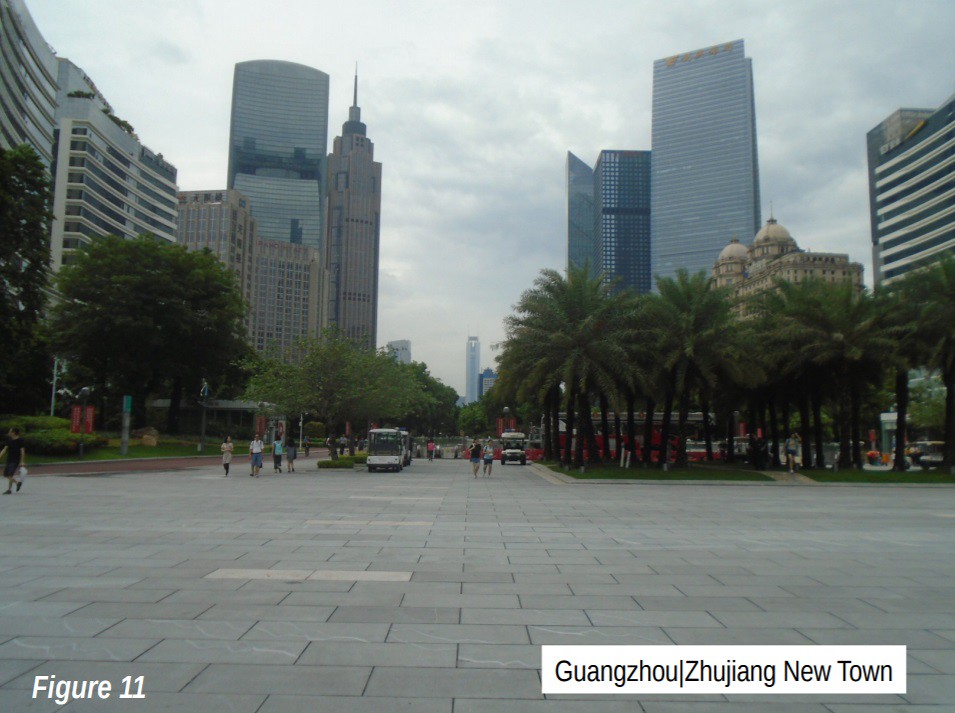

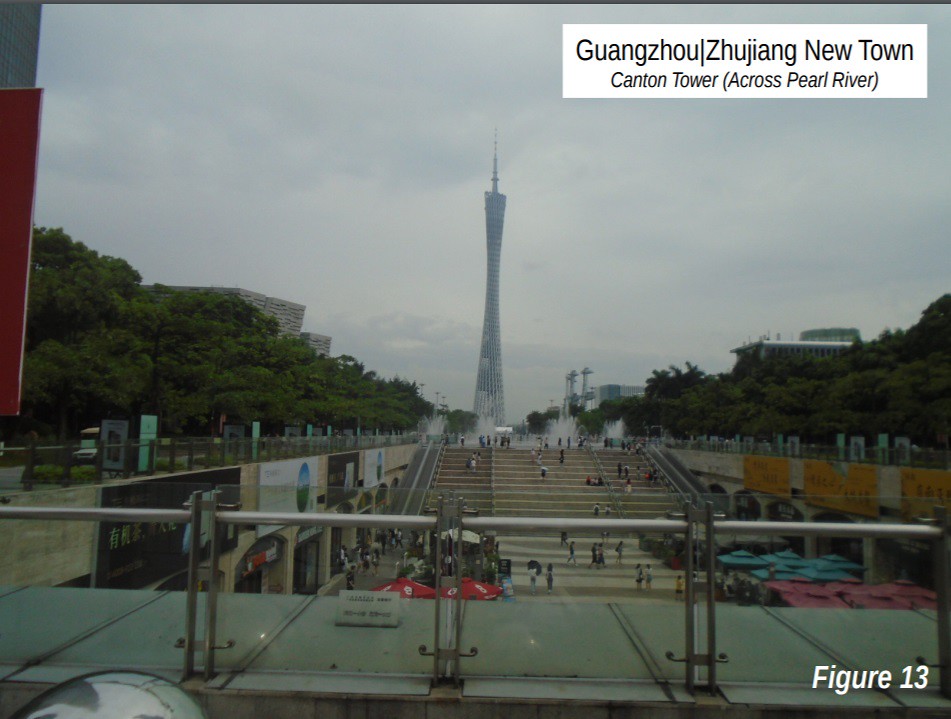
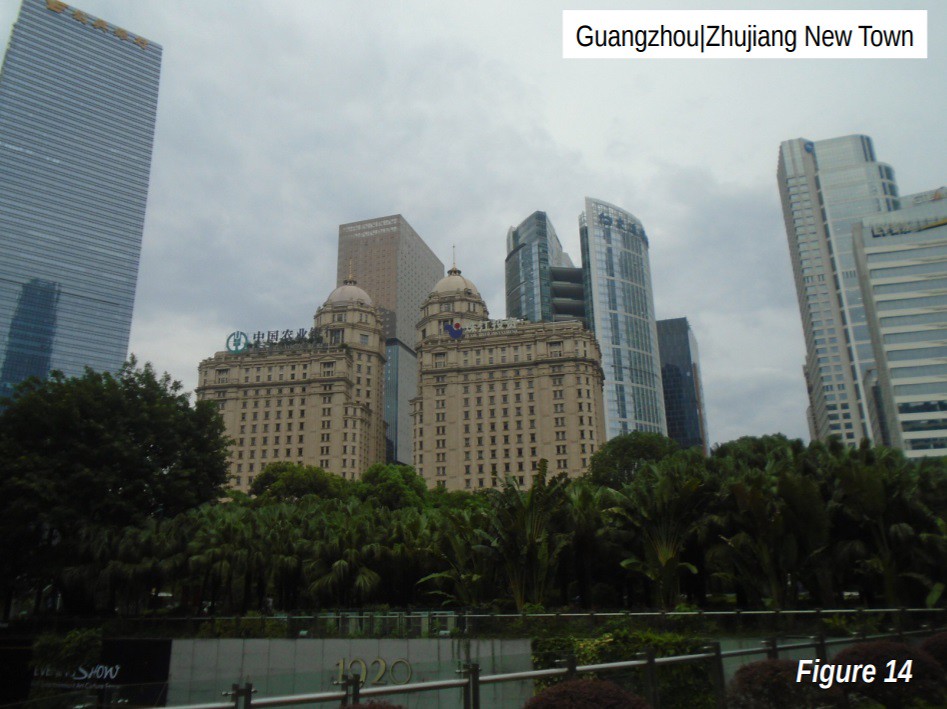


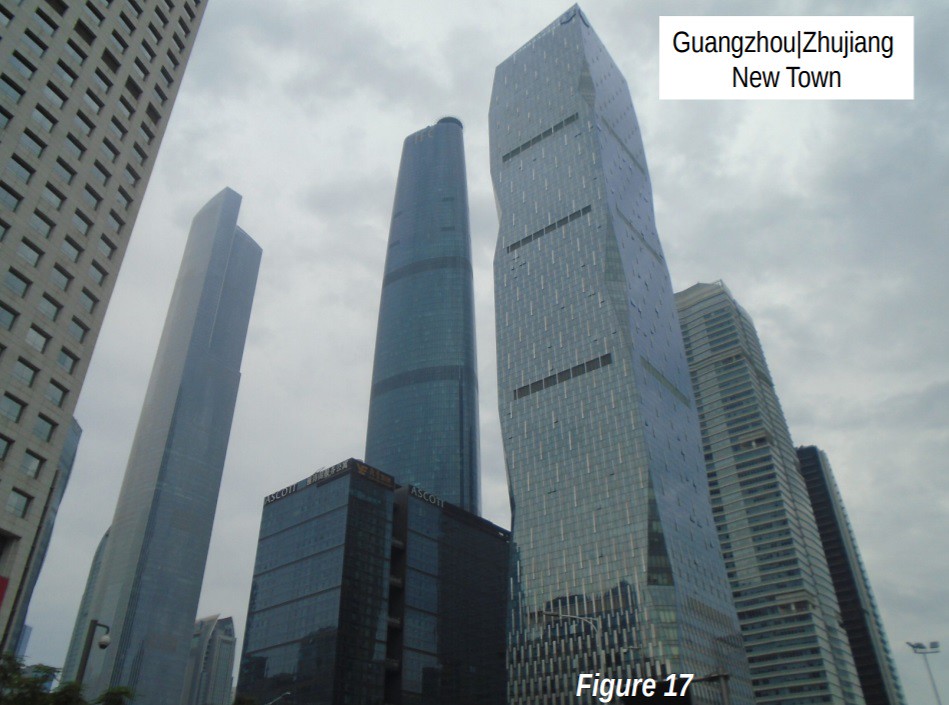
Figures 18-19: Older Central Guangzhou
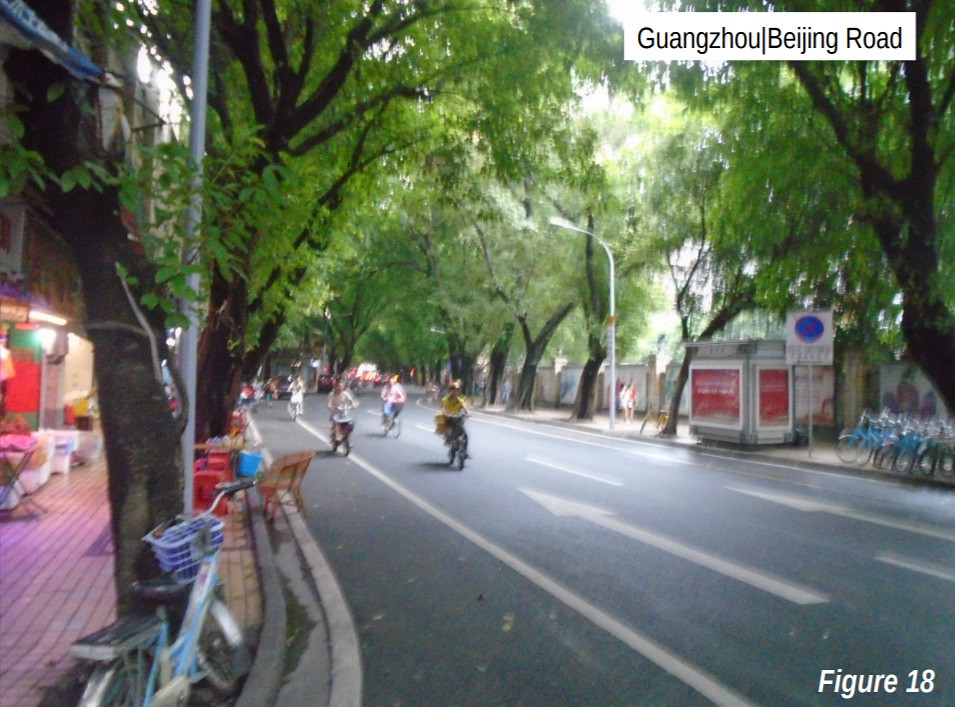

Figures 20-23: Baiyun New Town edge city and motorways (freeways)




Figure 24: Suburban villa development

Figure 25: Xiqiao Mountain (Foshan)

Figure 26: Edge city development at Guangzhounan
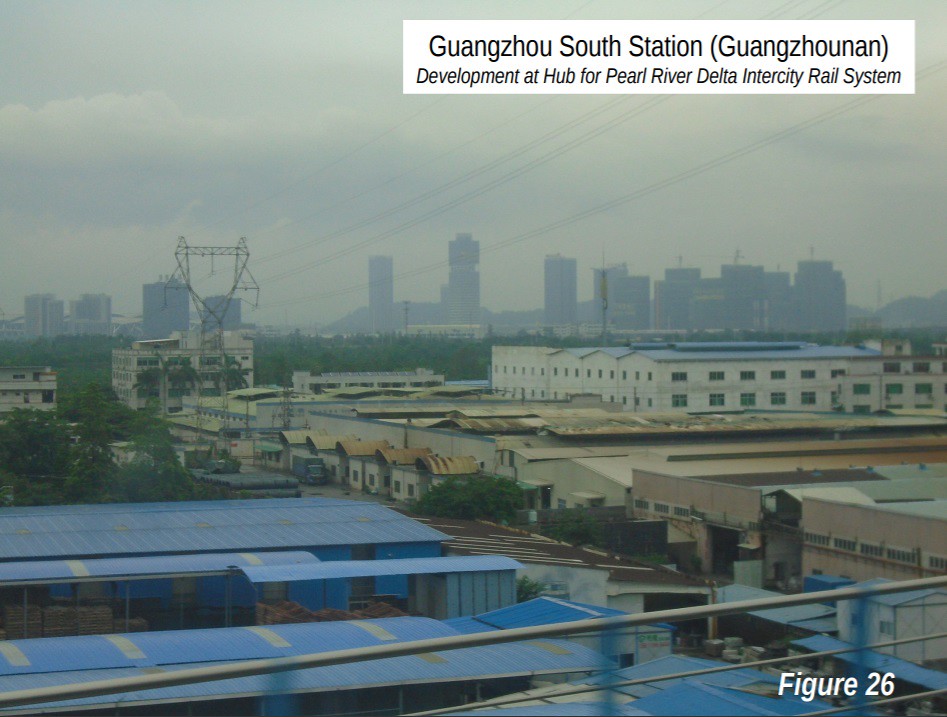
Figures 27-30: By train from Guangzhounan to Zhuhai
There is also direct access to nearby Macao from Zhuhai Station

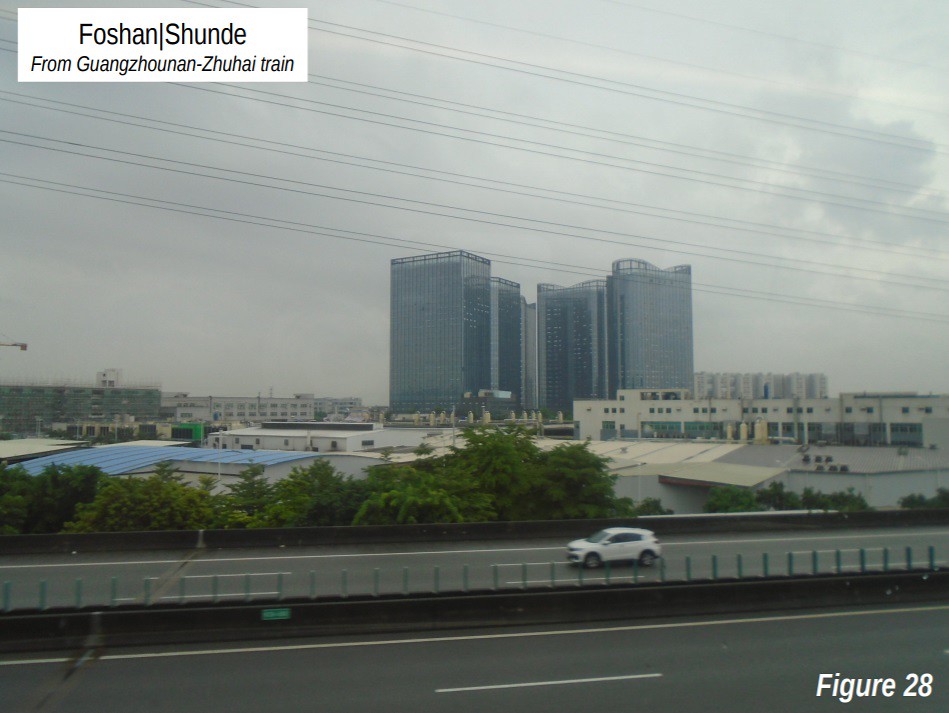
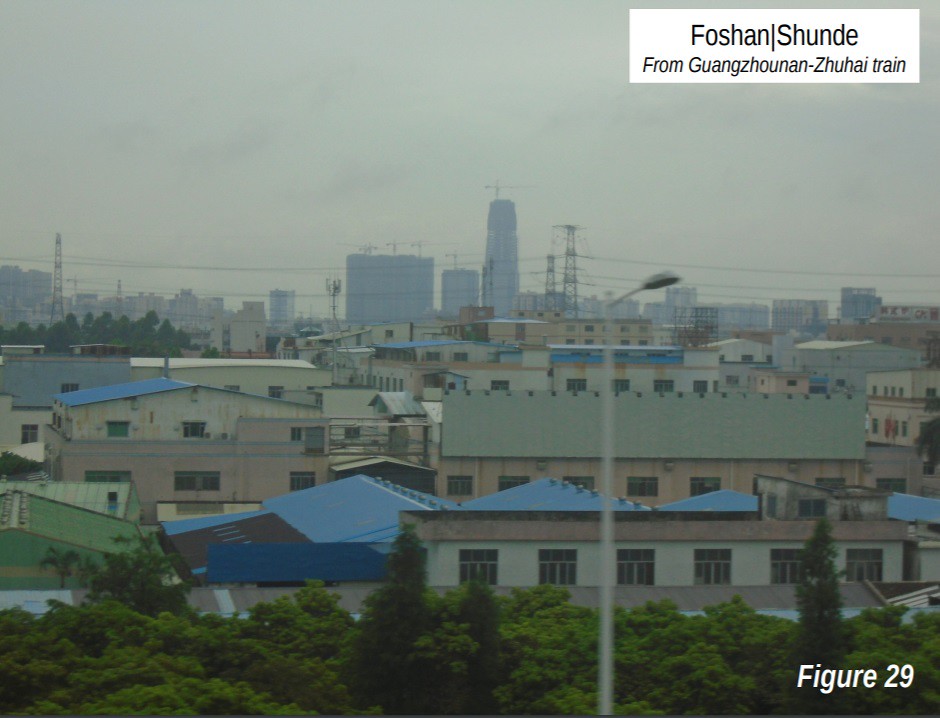
Figures 31-32: Zhuhai


The East Bank: Shenzhen, Dongguan and Hong Kong (Figures 33-55)
Figures 33-40: Shenzhen Futian CBD
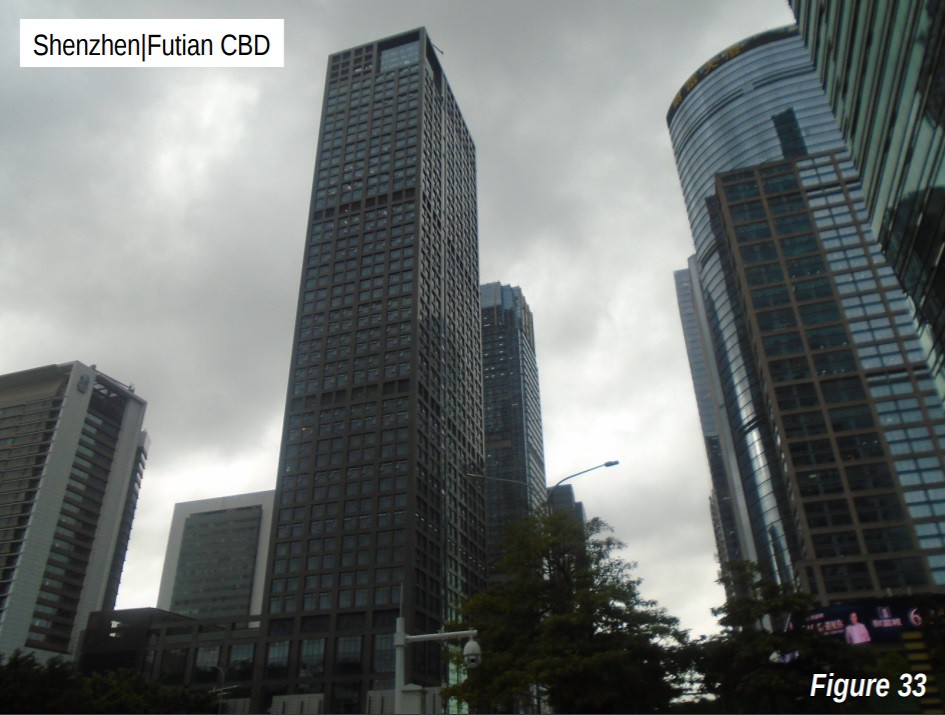
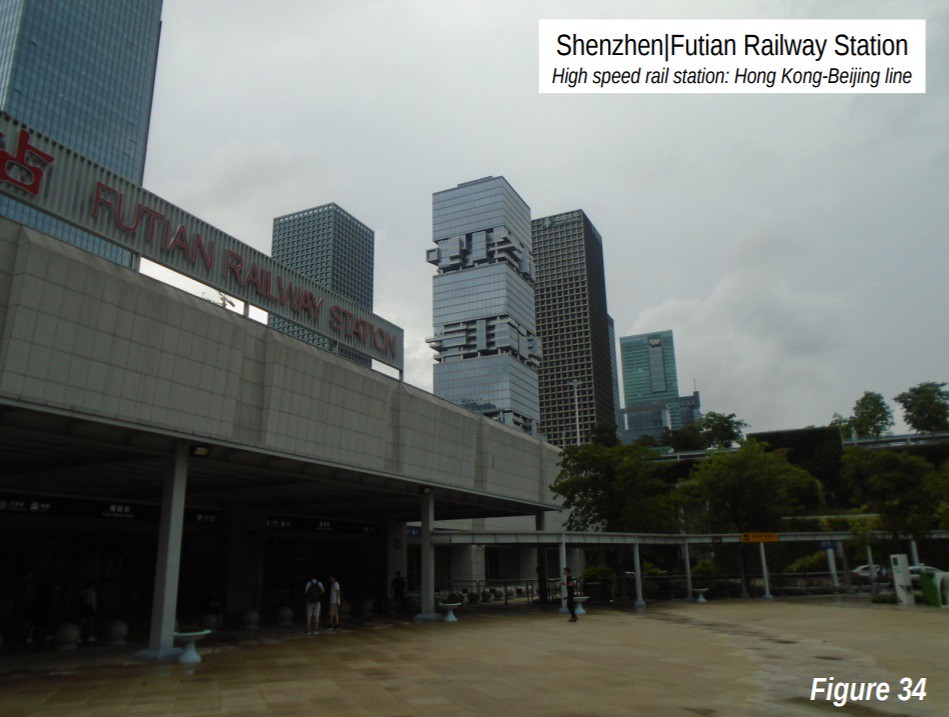


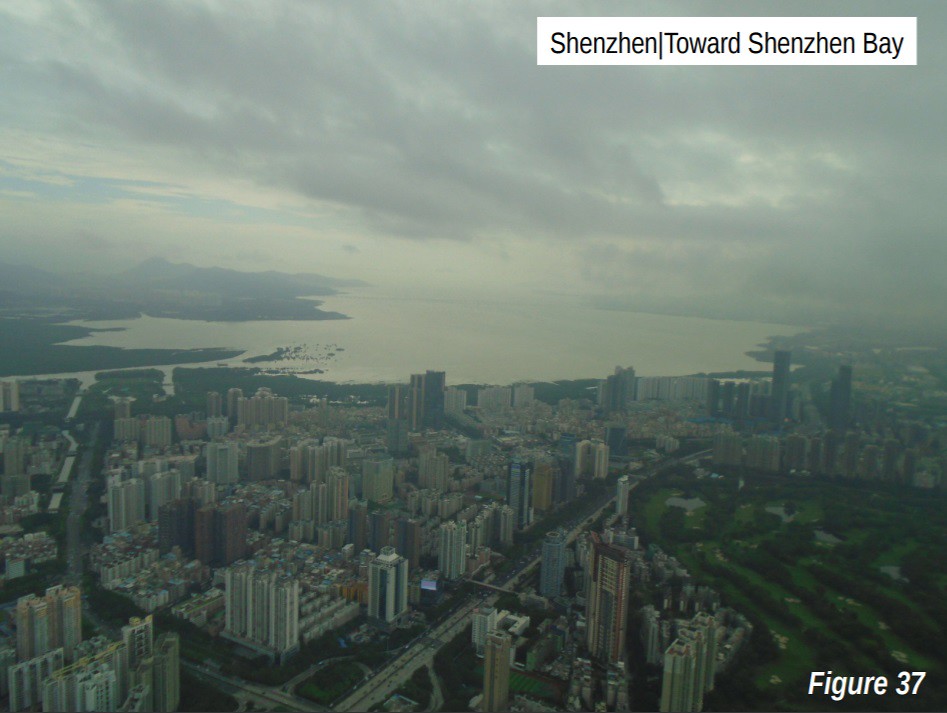
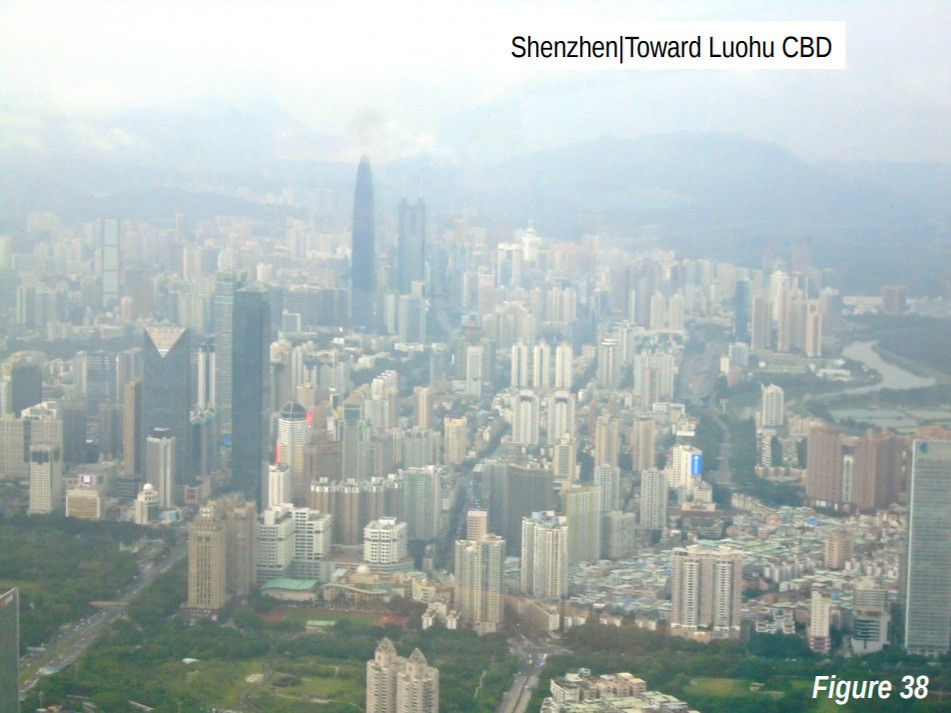


Figures 41-43: Shenzhen Huaqiangbei (China’s “Silicon Valley”)



Figures 44-48: Shenzhen Luohu CBD

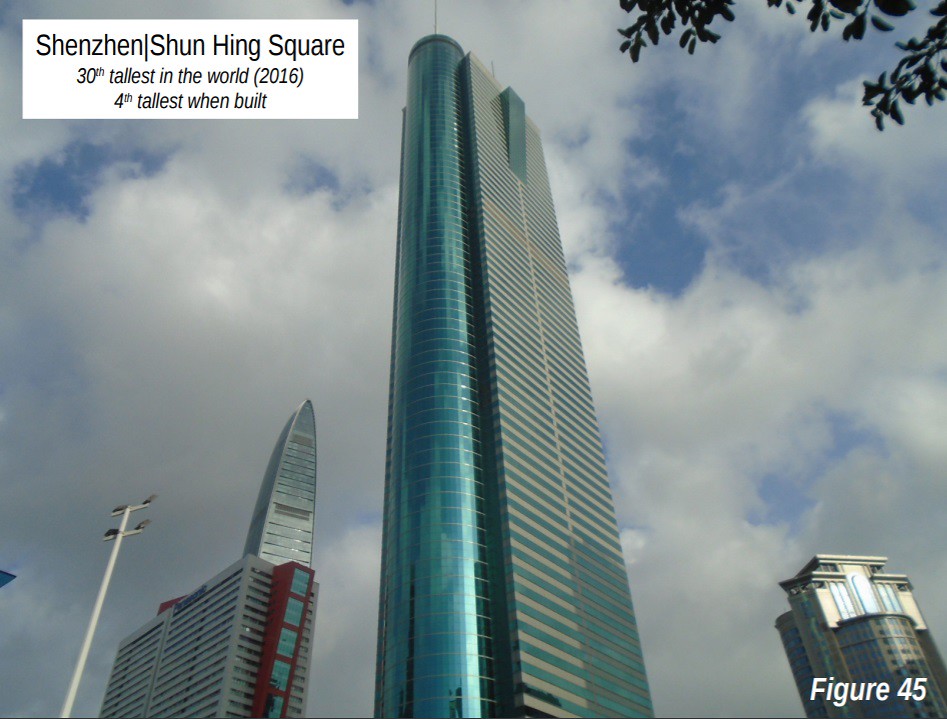




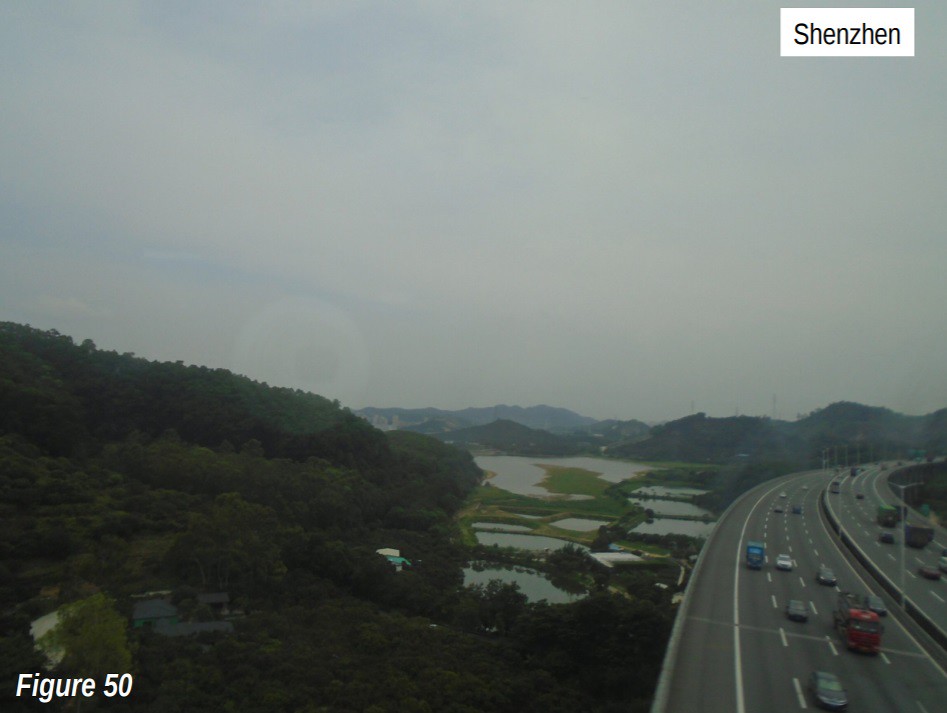
Figure 51: Dongguan

Figures 52-56: Hong Kong
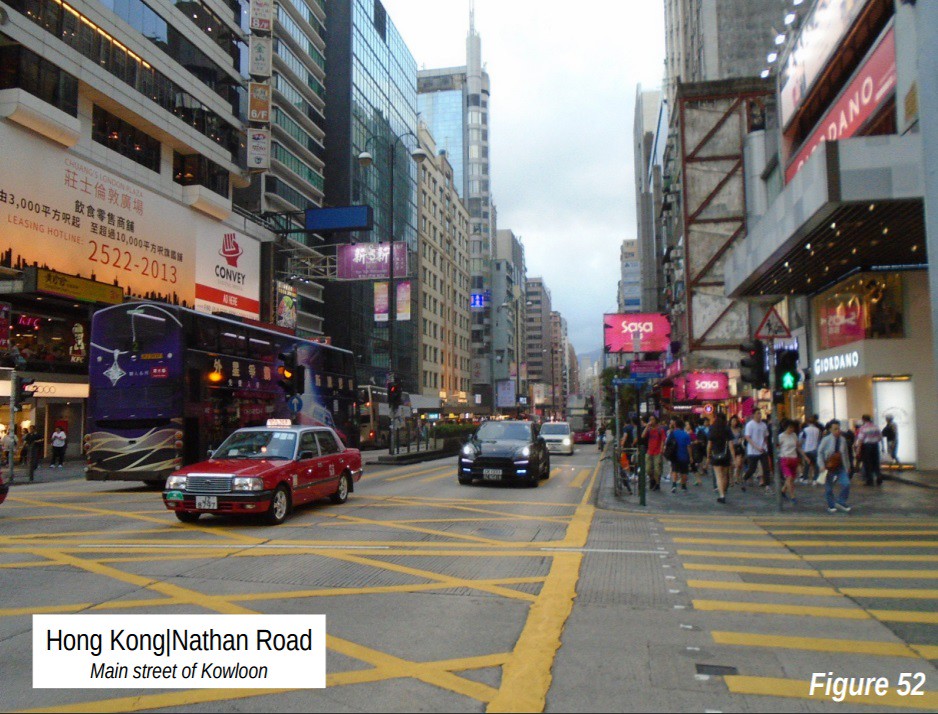



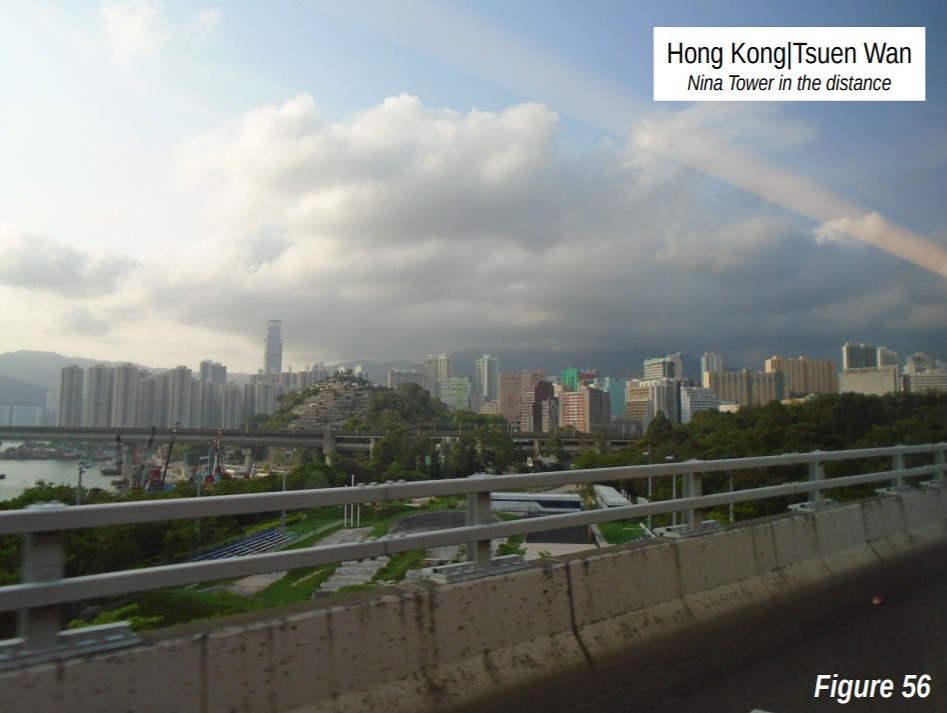
NOTES
Note 1: The Yangtze Delta adjacent urban areas include Shanghai, Kunshan, Suzhou, Wuxi and Changzhou. Like the Pearl River Delta, these former enclave urban areas have grown into adjacent urban areas.
Note 2: China is now the world’s leading producer of automobiles. Automobile ownership, while still low compared to high income nations, is rapidly increasing.
Wendell Cox is principal of Demographia, an international public policy and demographics firm. He is a Senior Fellow of the Center for Opportunity Urbanism (US), Senior Fellow for Housing Affordability and Municipal Policy for the Frontier Centre for Public Policy (Canada), and a member of the Board of Advisors of the Center for Demographics and Policy at Chapman University (California). He is co-author of the "Demographia International Housing Affordability Survey" and author of "Demographia World Urban Areas" and "War on the Dream: How Anti-Sprawl Policy Threatens the Quality of Life." He was appointed to three terms on the Los Angeles County Transportation Commission, where he served with the leading city and county leadership as the only non-elected member. He served as a visiting professor at the Conservatoire National des Arts et Metiers, a national university in Paris.
Top Photograph by N509FZ [CC BY-SA 4.0 ], from Wikimedia Commons












